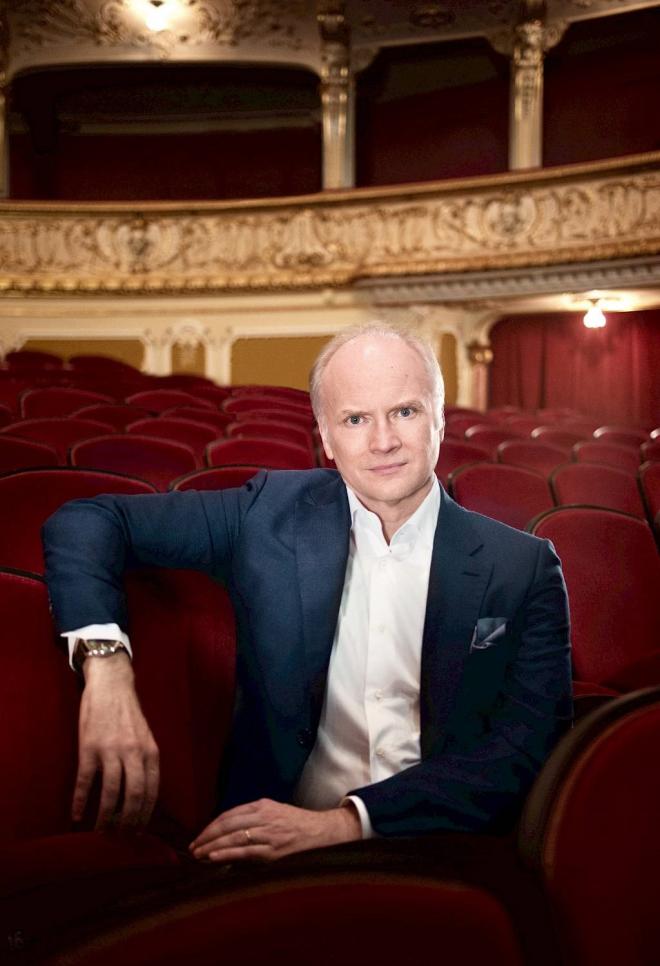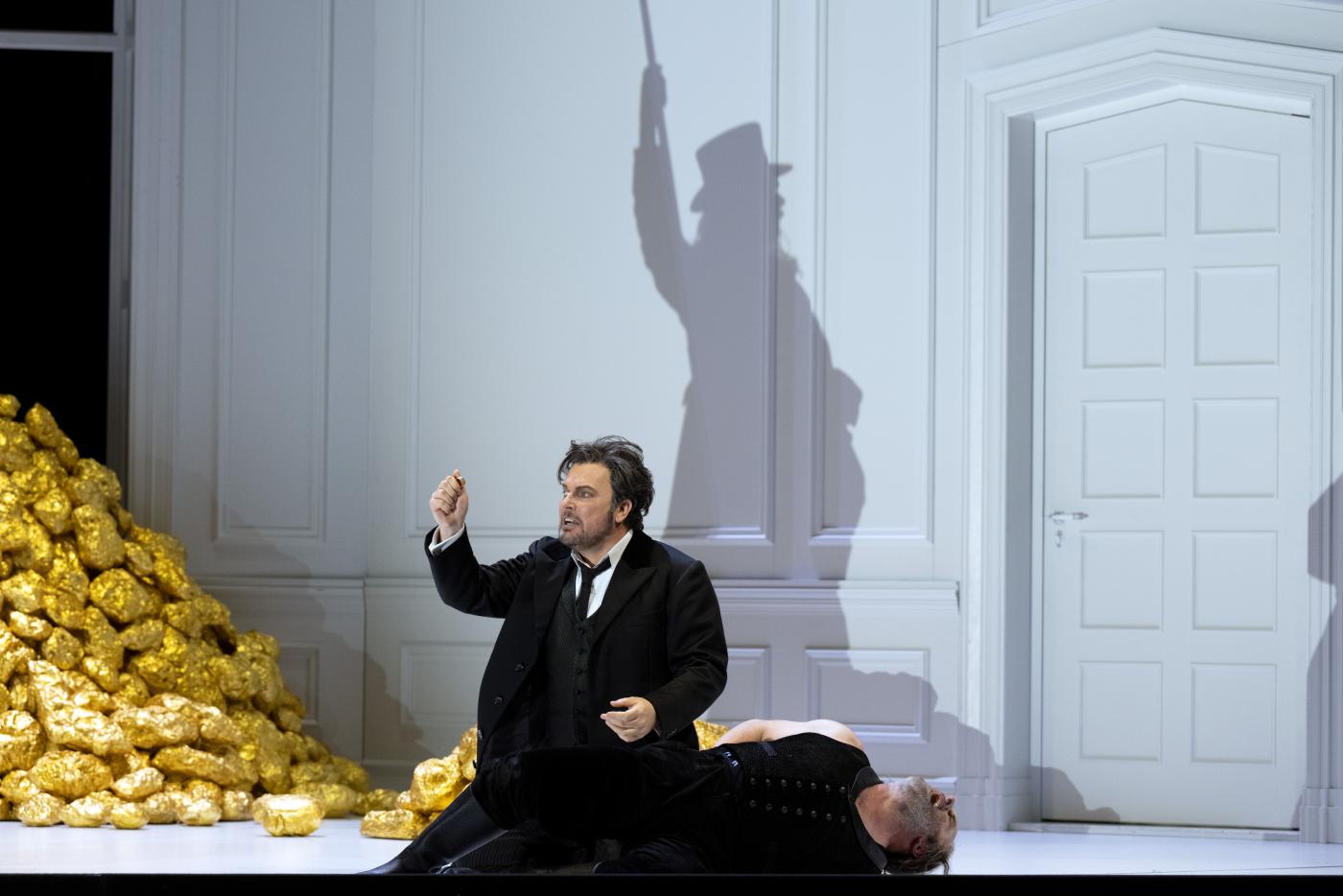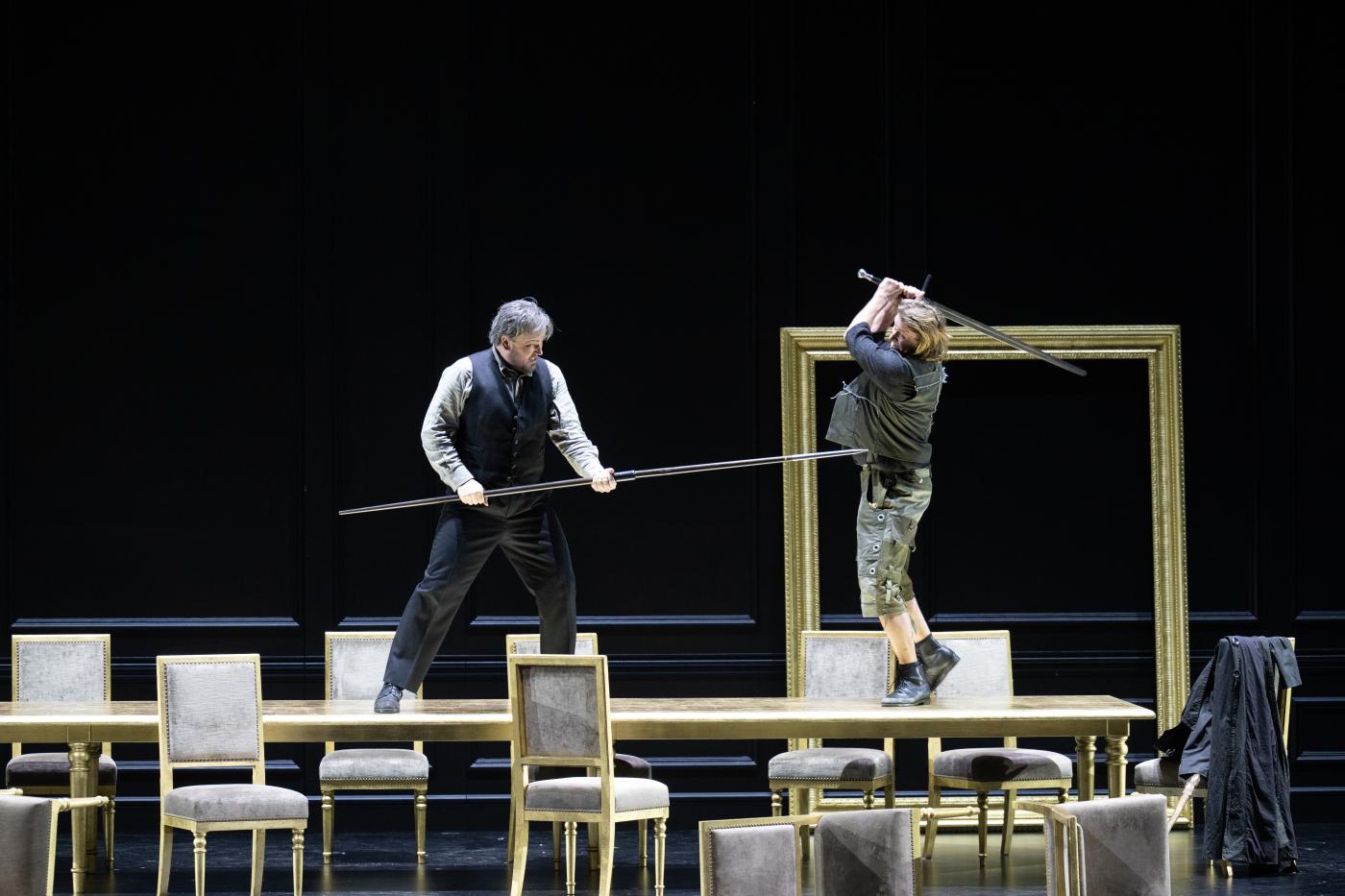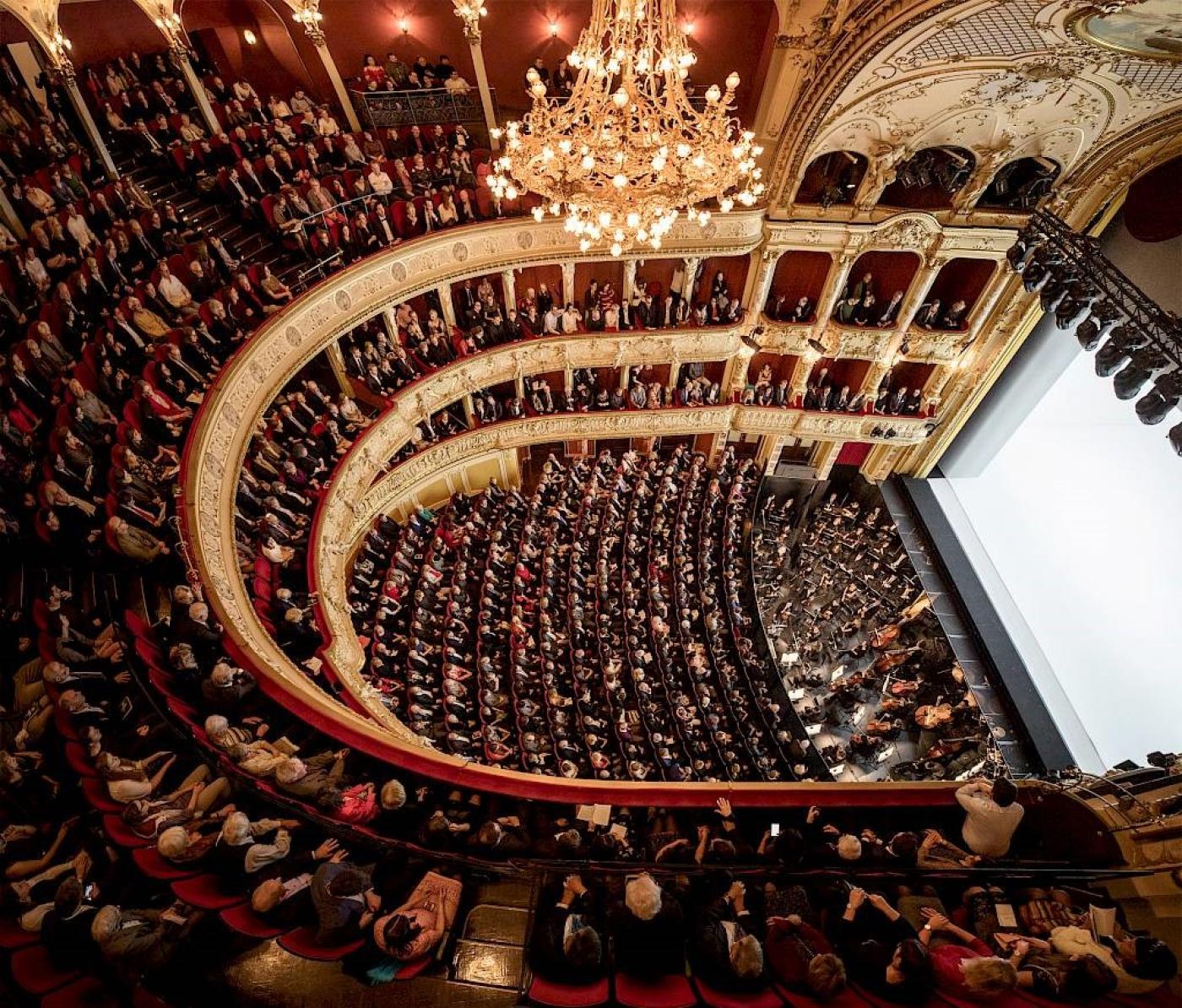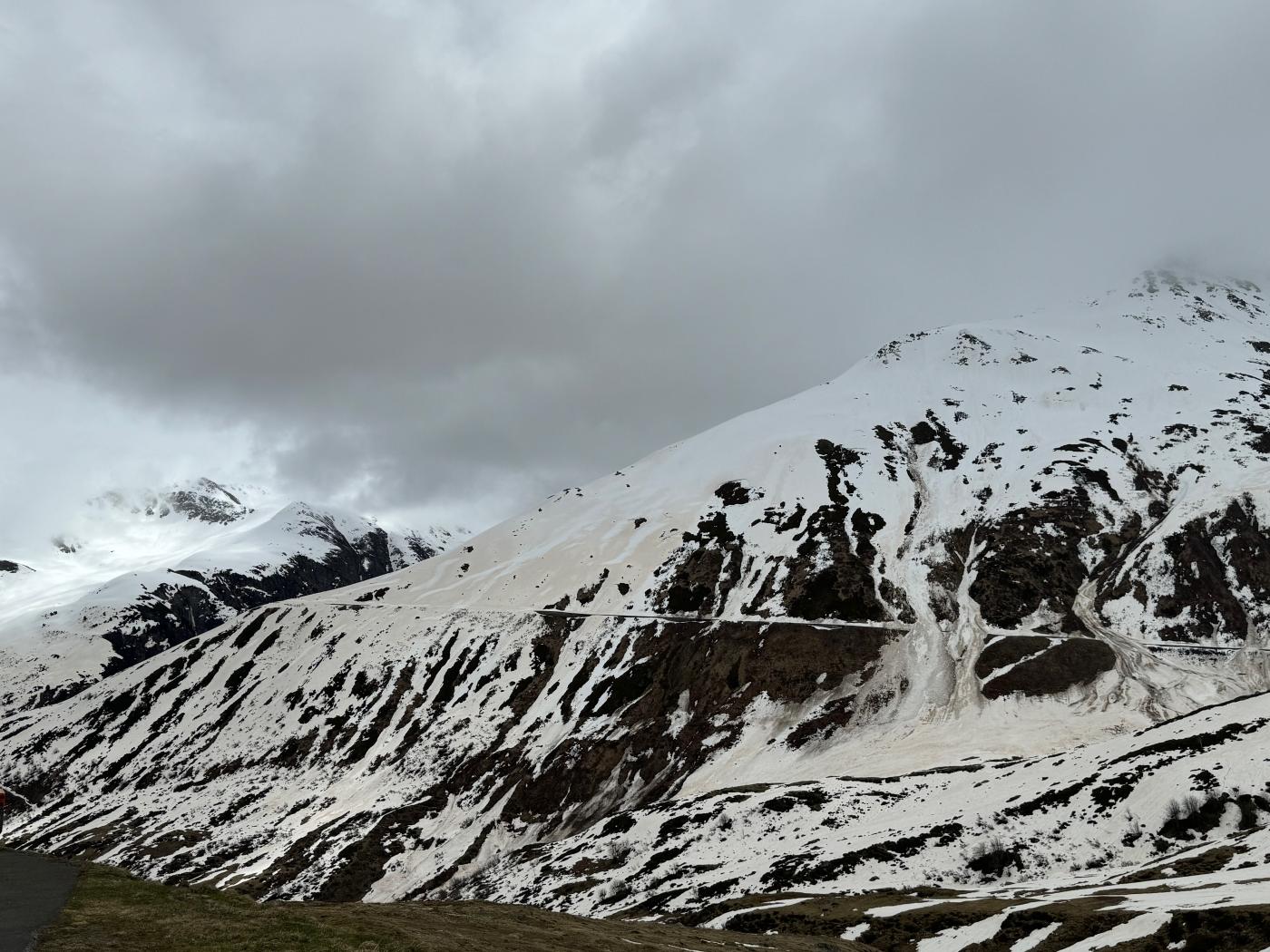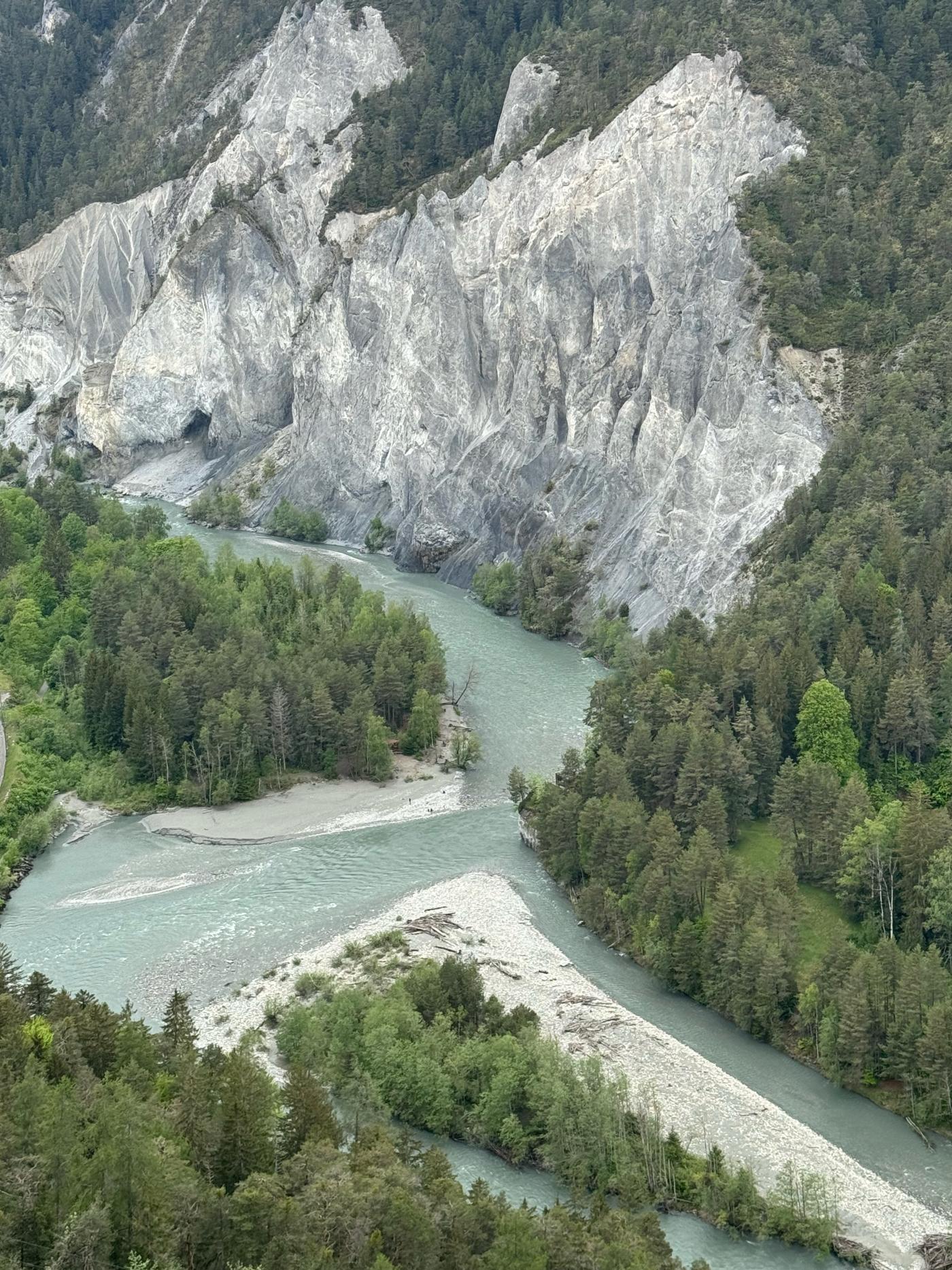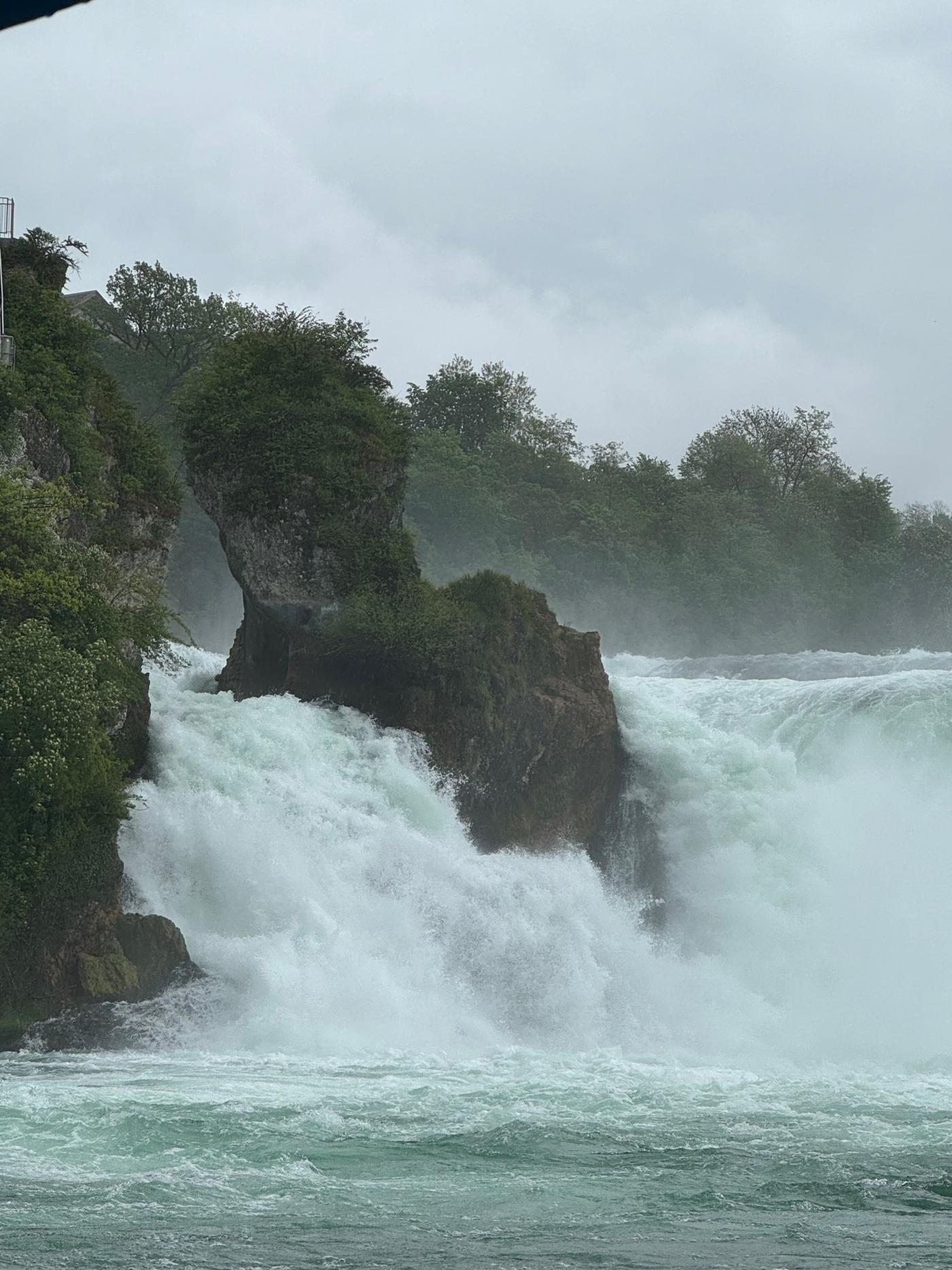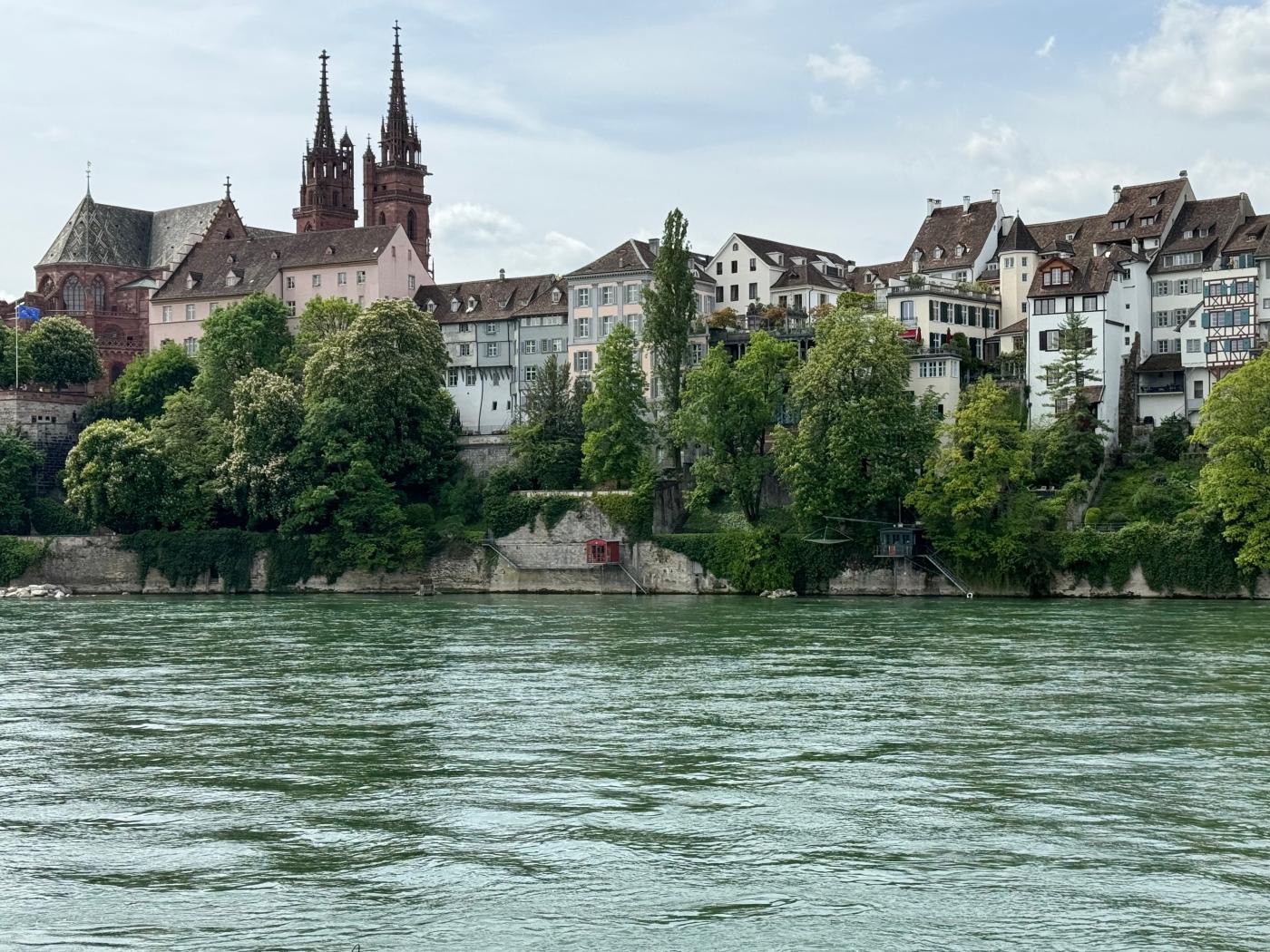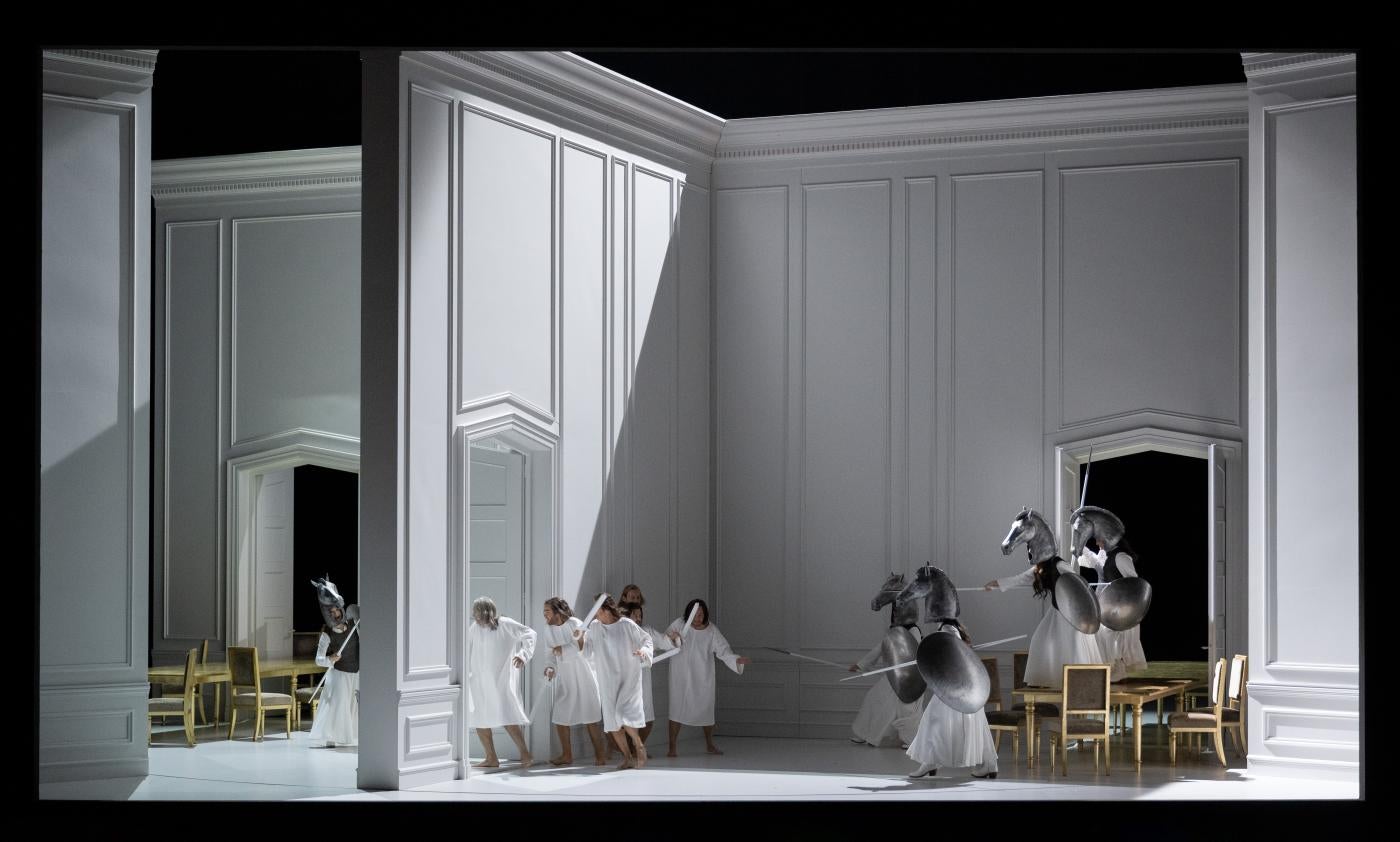The complete Wagner Ring cycle from Zurich Opera, led by Noseda, is available for on-demand video streaming until June 15, 2024. Details below.
Washington’s own Maestro Gianandrea Noseda is racking up a series of firsts this year: the release of the first Beethoven symphony cycle recording with the National Symphony Orchestra, where he is music director; the first opera in concert performances with the NSO this weekend (Verdi’s Otello); and his first Ring cycle last month, with the Zurich Opera, where he is general music director.
Presenting Wagner’s four-opera Der Ring des Nibelungen cycle remains, nearly 150 years after its premiere, a benchmark for opera companies, orchestras, and conductors. The technical and musical demands are daunting, and not all productions succeed in the challenge.
I had the good fortune to attend Noseda’s first Ring cycle in early May, and I do not think it is an overstatement to call it a triumph. I am not a music or theater critic – I’ll let others quibble over details about both aspects of this production – but I can say that this is one of the most satisfying of the many Ring cycles I’ve seen in person. This is largely due to the musical craft of Maestro Noseda and the musicians he assembled. And because the director’s concept did not diminish or contradict Wagner’s intricate musical language.
I could say a lot more about the previous two paragraphs – and I probably will as we approach the sesquicentennial of the Ring's 1876 premiere -- but today I will focus on two aspects of this production: Noseda’s approach to the score and the special nature of a Ring cycle from Zurich.
It is rare for me to find a Wagner review that matches my experience as a listener. But there is a happy exception in this article from the Guardian (UK), which nicely summarizes the production’s excellence: “This is a fresh and intelligent cycle that is full of interest and consistently musically distinguished.”
The author goes on to describe the production’s many merits and the strengths of the primary singers. In my experience, it’s rare to have such a strong cast from beginning to end of the cycle. It’s true that some of the leads weren’t entirely settled into new roles, but all were up to the task musically and dramatically. I do want to single out Polish baritone Tomasz Konieczny, whose portrayal of Wotan through three of the operas ranged from energetic and forceful to thoughtful and dejected, but always moving and memorable.
I want to expound on a comment that Martin Kettle from The Guardian makes, that Noseda “conducts the cycle with energy and directness and has an admirable instinct to push ahead.” Yes, yes, yes. And to that, I would add that an important part of the directness of his conducting is his ability to bring out the intricacies of the score without compromising the energy and forward momentum. All of these are characteristics evident in his recent Beethoven cycle and in recent Kennedy Center performances. Let’s call it passionate but intelligent musicality.
I’ll mention one example from the Zurich Ring that highlights these aspects: the opening of the final act of Siegfried. This is one of the great orchestral moments in the Ring. So often it is presented as a bombastic orchestral showpiece, but in Noseda’s hands, it was a nuanced, exciting, and ultimately frightening prelude to the dramatic confrontations between Wotan, Erda, and Siegfried, all in three minutes. Listen to the web stream of Siegfried from 2:43:00 to Wotan’s entrance. Notice how Noseda does not linger in the climax at 2:45:15 but pushes it forward, keeping the momentum and tension present through the momentary calm that often precedes a character’s entrance, and then directly into the spear motive and Wotan’s burst onto the stage.
I must admit that as much as I appreciate the ability to hear the Ring online, recordings do not capture the visceral experience of sitting in the opera house. The carefully crafted building of tension during the prelude and the violence of the climactic measures were truly thrilling. In fact, if wearable technology is to be believed, I experienced the highest heart rate of the day during that prelude.
This is but one example of a characteristic that permeated Noseda’s conducting of the Ring, not only in orchestral passages but throughout the dramas. In so many places, our attention might be on the singers and the spectacular vocal feats they must execute, but in this production, great subtleties come from the pit that are often overlooked or obscured. Noseda and the musicians on stage and in the orchestra are aided by the size of the Zurich Opera House. With only 16 rows of seats on the main floor, it’s about half the size of many opera houses. This small footprint allows carefully crafted nuances to be heard clearly throughout the space.
The sense of place also contributed to the production – at least, to my appreciation of it. It was in Zurich that Wagner wrote much of the Ring, and the time he spent at the Wesendonck estate overlooking Lake Zurich had profound effects on Wagner’s creativity. The Zurich Opera website is a great source for detailed information of the links between Wagner and Zurich, some of it video-narrated by Maestro Noseda.
But beyond these historical connections, it is worth considering the relationship to the setting of much of the Ring: the Rhine River. While it’s true that the romantic nineteenth-century concept of the Rhine is focused on its beautiful path through southwestern Germany, the river begins in Switzerland and presents many dramatic Wagner-worthy romantic vistas before entering Germany.
So, on the rest days between Ring opera performances, I decided to track the flow of the Rhine through Switzerland. I would be happy to share the details with anyone interested, but here is the condensed version:
The source of the Rhine is about 100 km south of Zurich, just east of the famous Gotthard Tunnel (and interestingly just about at the midpoint between Zurich and Lake Maggiore, two of Maestro Noseda’s outposts). In the photo below, the origin of the Rhine is on the other side of the peak. I traveled only with shoes appropriate for the opera house, not for snowy alpine hiking, so I couldn’t quite make the last half km.
From its source, the Rhine flows eastward and soon is the feature of a stereotypically dramatic Swiss landscape, as seen below. (We learn in Die Walküre that Fafner lives as a dragon in a cave “to the east” -- perhaps here?)
It then turns north, forming the border with Liechtenstein before widening into Lake Constance. Exiting the lake to the west, the river provides at least two more notable vistas: the Rhine Falls, which are about a 45-minute train ride north of Zurich, and then as a majestic river flowing through Basel before heading north into Germany.
It is difficult to explain what effect such esoteric elements had on my enjoyment of the Ring, but something about the wildness of the Rhine in Switzerland and its proximity to the opera performance in Zurich certainly influenced my reception of the production. And it’s not too great a stretch to imagine the opening measures of the Ring, with the lone, barely perceptible low E-flat, as representing the genesis of the Rhine high in the Alps. And as the prelude unfolds one can imagine it nearly encircling Zurich as it forms into a mighty river.
In any case, between the impressive musicality on display, the brightness and positivity of the production, and the special nature of the setting, I fully agree with another statement in the Guardian article:
“These are days of plenty for Wagner operas in Europe, and for the Ring in particular... Important new cycles will get under way in Milan...Munich...Paris...and Bayreuth. It is an extraordinary post-pandemic flowering. But the truth is that the Zürich Ring has already set the bar high for them all.”
You can experience as much of this production as your time and interest allow, at least before June 15th. The second cycle from late May is available for on-demand streaming at the Zurich Opera website. It’s worth carving out fifteen hours to watch the entire cycle. But if you’d prefer to make a smaller commitment, I can recommend Die Walküre as the cycle’s strongest individual opera.
And to experience the full impact of the production’s dramatic and musical excellence, you might consider adding two more segments: the first part of Siegfried Act III (from 2:43:00 to 3:18:00) and the confrontation scene in Act II of Götterdämmerung (from 2:35:00 to 2:46:00). But we can all hope that Zurich Opera offers a revival of this Ring cycle before too many years pass. To experience the full impact of this production, one must be in the house.
If you’ve read this far, you’re clearly a Wagner enthusiast, and you probably know that we’re approaching two important Ring anniversaries: the score's completion in late 1874 and its premiere in Bayreuth in 1876. As we plan our coverage during these two years, we welcome your comments, experiences, and questions at classical@weta.org.
PBS PASSPORT
Stream tens of thousands of hours of your PBS and local favorites with WETA+ and PBS Passport whenever and wherever you want. Catch up on a single episode or binge-watch full seasons before they air on TV.
